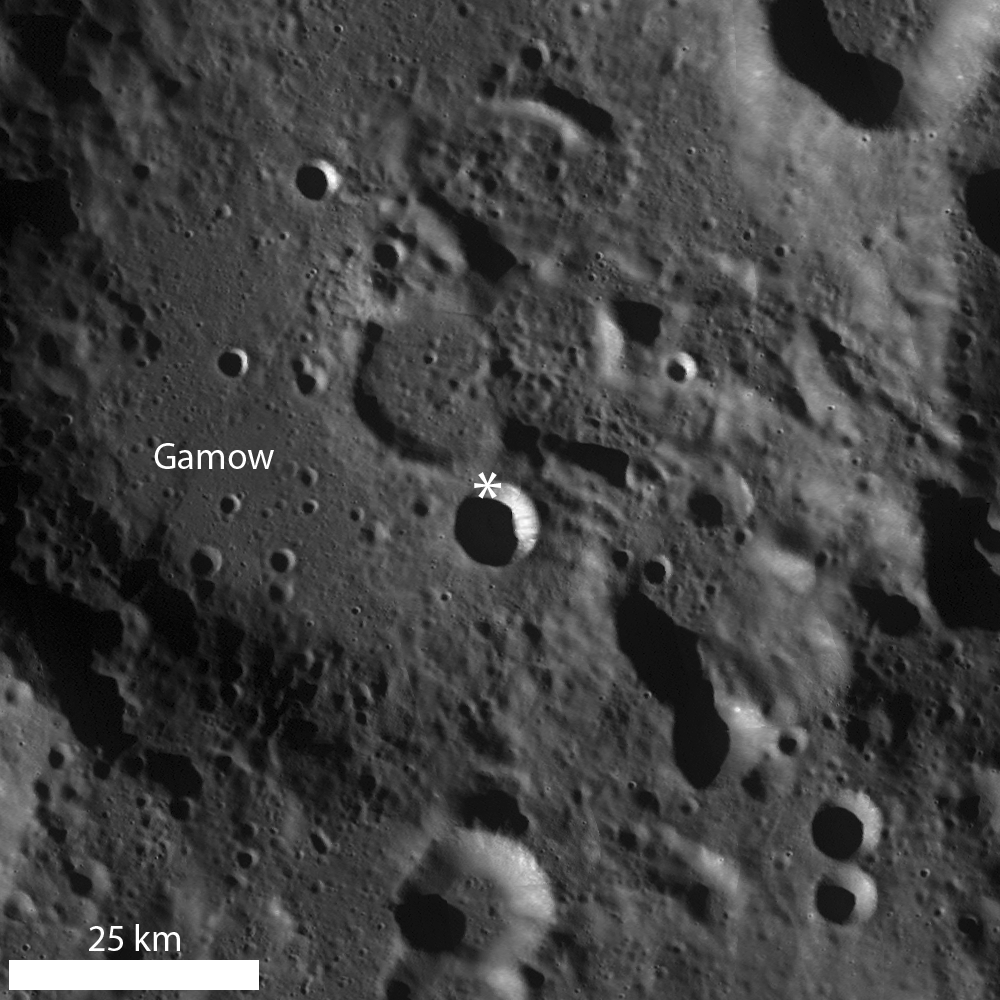
Post-impact modification is frequently observed in LROC NAC images, because post-impact modification begins as soon as the impact crater has formed and ejecta emplaced. Impact crater formation is a violent process, so it should be no surprise that the target rock surrounding the impact site may be fractured and faulted, especially near the crater rim. Today's Featured Image of the northern rim of an unnamed ~8.5 km diameter crater (64.754°N, 145.546°E) focuses on the faulted nature of the crater rim and evidence for mass wasting.
The upper portion of the opening image is the outer flank of the crater, the fractures represent the crater rim "edge" (the lower portion of the image is the steep interior wall). As time passes and materials (blocks, fine-grained material) are dislodged from the rim and crater wall, the crater rim erodes and degrades, expanding outward (the diameter of the crater actually increases, while its depth decreases). Some examples of this "slope retreat" of the crater rim are very obvious, whereas others, like today's example, are less so. Today's example shows small-scale slumping of the crater wall as opposed to larger-scale slumping of massive portions of rim material. Perhaps the smaller size of this crater compared to other examples is the reason the slope retreat does not appear well-developed, or maybe the failure of rim faults is less pronounced due to pre-existing target properties (e.g., highly fractured nature of the highlands, impact into floor material of a larger crater, etc.).
Explore this farside simple crater for yourself in the full LROC NAC image!
Related Posts:
Top of the Landslide
On the Edge
Posidonius Y
Published by Lillian Ostrach on 10 April 2013
